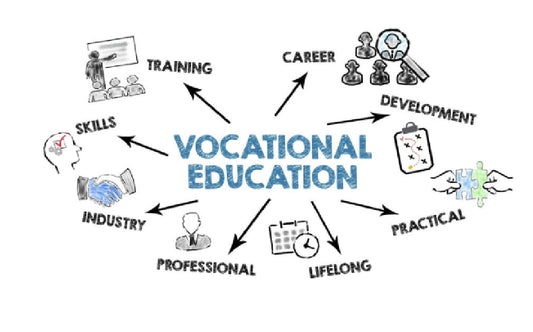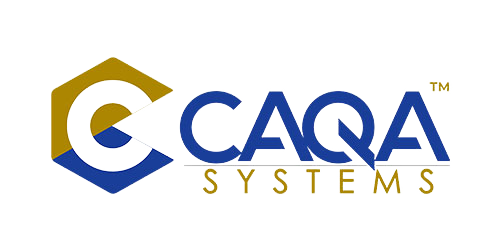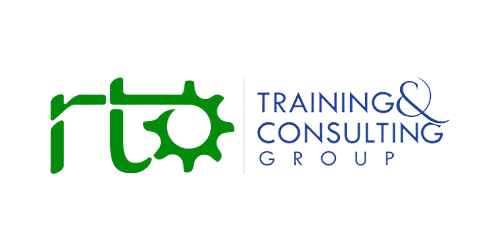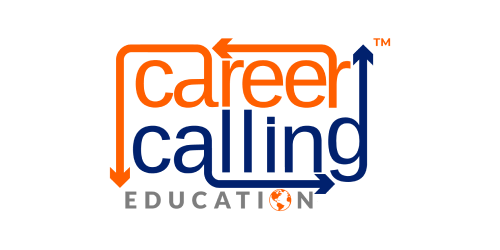In the rapidly evolving landscape of Australian vocational education and training (VET), artificial intelligence technologies are no longer futuristic concepts but present-day tools reshaping how we teach, assess, and support learners. From automated assessment platforms to personalised learning pathways and administrative efficiencies, AI promises to revolutionise every aspect of the VET sector. However, this technological revolution brings with it profound ethical considerations that must be addressed for the sector to thrive in this new era. Recent research indicates that 78% of VET providers are planning to implement or expand AI technologies in their operations within the next three years, yet fewer than 30% have established ethical frameworks to guide these implementations. This disconnect between adoption and governance represents a significant risk, not just to compliance with emerging regulations, but to the core mission of the VET sector itself: equitable, high-quality skills development for all Australians.
Australia's eight AI Ethics Principles provide a voluntary but comprehensive framework designed to ensure AI systems are safe, secure, and reliable. While these principles were developed for broad application across sectors, they have particular resonance for vocational education providers, where the stakes of AI implementation directly impact learner outcomes, industry readiness, and social equity. This article examines these principles and their specific applications in vocational education and training contexts, providing practical implementation strategies to equip VET leaders, practitioners, and policymakers with the knowledge needed to harness AI's benefits while safeguarding the values that define quality vocational education.
The first principle, Human, Social and Environmental Wellbeing, asserts that AI systems should benefit individuals, society, and the environment throughout their lifecycle. In the VET context, this means ensuring that AI tools enhance rather than diminish the educational experience, workplace readiness, and broader community outcomes. When implementing an AI-powered assessment platform, providers must evaluate not just its efficiency but its impact on learner confidence, skill development, and employment outcomes. Technologies that streamline processes at the expense of developing critical human skills fail this fundamental test of well-being. A regional training provider recently piloted an AI feedback system for practical skills assessments and discovered that while assessment time decreased by 40%, learners reported feeling disconnected from the feedback process. By redesigning the system to include a hybrid approach—combining AI-generated technical feedback with human trainer contextualisation—both efficiency and wellbeing measures improved significantly.
The second principle, Human-Centred Values, emphasises that AI systems must respect human rights, diversity, and individual autonomy. For VET providers, this translates to ensuring AI systems enhance rather than undermine the human elements that make effective vocational training possible. AI systems that make recommendations about learning pathways, career options, or support interventions must be designed to expand learner choices rather than narrow them. Systems should augment trainer expertise, not replace the critical human judgments that define quality vocational education. Consider an AI system that flags learners potentially at risk of non-completion. When designed with human-centred values, such a system provides trainers with insights while preserving their professional judgment about appropriate interventions. The system becomes problematic when it automatically restricts learner options or makes determinations without human oversight.
Fairness, the third principle, requires that AI systems be inclusive and accessible, without involving or resulting in unfair discrimination. This has particular relevance in VET, where diverse learner cohorts bring varied backgrounds, learning needs, and technological fluency. When deploying AI-enabled learning resources, providers must ensure these systems perform equitably across different demographic groups, learning styles, and technological capabilities. This requires rigorous testing with diverse user groups and continuous monitoring for bias. A metropolitan TAFE implemented an AI language tool to support written assessments for trade qualifications. Initial data revealed that the system primarily benefited learners with higher digital literacy, potentially disadvantaging those with limited technology access. By developing supplementary digital skills modules and alternative access methods, the provider ensured the tool's benefits were more equitably distributed.
The fourth principle, Privacy Protection and Security, demands that AI systems respect privacy rights, ensure data protection, and maintain security. In educational contexts where sensitive learner data drives AI functionality, this principle takes on heightened importance. VET providers must implement robust data governance frameworks for all AI systems that collect, analyse, or store learner data. This includes clear consent mechanisms, purpose limitations, and appropriate security measures. A privacy-centred approach to AI in VET includes transparent data collection notices that clearly explain how AI systems use learner information, minimisation principles that limit data collection to what's necessary for the intended purpose, regular security audits of AI systems processing sensitive information, and de-identified data usage wherever possible, particularly for system development and training.
Reliability and Safety, the fifth principle, requires AI systems to operate consistently with their intended purpose, with appropriate accuracy and safety measures. For VET providers, unreliable AI systems can have cascading impacts on educational quality, compliance, and learner outcomes. Before implementing AI for critical functions like competency assessment or RPL determinations, providers must establish rigorous testing protocols and continuous monitoring mechanisms to ensure these systems reliably perform as intended. A construction training programme implemented AI-powered simulation assessment for high-risk competencies with an implementation strategy that included parallel assessment processes during the pilot phase, regular validation comparing AI and human assessor determinations, clear escalation pathways when the AI system demonstrated uncertainty, and ongoing monitoring for drift in assessment decisions.
The sixth principle, Transparency and Explainability, calls for responsible disclosure so people understand when AI is impacting them and can comprehend how decisions are being made. In educational settings, where decisions affect learner progression and qualification, transparency becomes a matter of educational integrity. VET providers should clearly inform learners when AI systems influence educational decisions, from adaptive content delivery to assessment validation. Where possible, these systems should provide explanations for their determinations in language accessible to diverse learner groups. Transparency in practice involves clear labelling of AI-generated content or feedback, plain-language explanations of how AI systems determine recommendations, regular reporting on how AI systems are being used and their performance metrics, and accessible documentation of the data sources and logic informing AI operations.
Contestability, the seventh principle, establishes that when AI significantly impacts individuals, there must be mechanisms to challenge its use or outcomes. For VET providers, this means ensuring learners and staff can question AI-driven decisions without undue barriers. Providers should establish clear processes for appealing decisions influenced by AI, ensuring these processes are accessible to all learners regardless of digital literacy or language background. An effective contestability framework includes simple, well-documented procedures for requesting human review of AI-influenced decisions, multiple channels for raising concerns (digital and non-digital), regular auditing of contested decisions to identify systemic issues, and accessible language support for learners from diverse backgrounds.
The final principle, Accountability, establishes that those responsible for different phases of AI systems should be identifiable and accountable for outcomes, with appropriate human oversight maintained. In VET, where regulatory compliance and professional standards create multiple accountability layers, this principle requires careful implementation. VET providers must establish clear lines of responsibility for AI-enabled processes, ensuring accountability remains with appropriate human decision-makers rather than being diffused by technology. This involves designated oversight roles for AI-enabled systems, regular ethical review processes for AI applications, clear documentation of human review points in automated processes, and training for staff on their roles and responsibilities related to AI oversight.
Understanding these principles is only the first step. Translating them into operational practice requires strategic approaches tailored to the unique characteristics of vocational education and training. Different AI applications carry varying levels of ethical risk in educational contexts. A risk-based approach to AI governance helps providers allocate appropriate oversight resources where they're most needed. Providers should develop a tiered governance framework that categorises AI applications based on their potential impact on learners and educational integrity. High-risk applications, such as AI systems directly influencing assessment outcomes, qualification decisions, or access to educational opportunities, require comprehensive ethical review, regular auditing, and substantial human oversight. Medium-risk applications, like systems that shape the learning experience or provide substantive feedback without determining progression or outcomes, require transparency measures and periodic review. Low-risk applications, including administrative or efficiency tools with minimal direct learner impact, require basic documentation and standard data security practices. A metropolitan RTO successfully implemented this approach by establishing an AI Ethics Committee with representation across academic, industry, and learner advocacy domains. High-risk applications undergo quarterly reviews, while medium-risk systems are assessed annually. This targeted governance approach has enabled innovation while maintaining appropriate safeguards.
Ethical AI implementation requires meaningful engagement with those who will use or be affected by these systems. In VET, this means involving trainers, learners, industry partners, and support staff in design and implementation decisions. Providers should establish structured co-design processes that engage key stakeholders throughout the AI implementation journey by forming representative advisory groups that include diverse learner voices, conducting impact assessments that specifically consider vulnerable learner cohorts, creating feedback channels that capture real-world experiences with AI systems, and partnering with industry to ensure AI applications align with workplace expectations. A regional provider developing an AI career guidance system established monthly design workshops with current apprentices, trainers, and industry mentors. This collaborative approach identified critical gaps in the system's initial design, particularly around regional job market understanding and industry-specific career pathways. The resulting system demonstrated significantly higher relevance and adoption rates than comparable off-the-shelf solutions.
Ethical AI implementation requires more than technical expertise—it demands widespread literacy about AI capabilities, limitations, and ethical considerations among staff and learners. Providers should develop tiered literacy programmes tailored to different stakeholders' needs. Leadership teams need a comprehensive understanding of AI ethics principles, governance requirements, and strategic implications. Trainers and assessors require practical knowledge of how to interpret AI outputs, identify potential biases, and maintain educational integrity. Learners need a basic understanding of when AI is being used, how to interpret its recommendations, and how to raise concerns. Support staff need focused training on data handling, privacy considerations, and appropriate system usage. A multi-campus TAFE implemented a digital badge programme recognising different levels of AI literacy among staff. The programme combined self-paced learning with facilitated ethical discussions, creating a community of practice around ethical AI use. Within six months, over 70% of teaching staff had achieved at least foundational certification, establishing a common language for discussing AI implementations.
Ethical AI implementation is not a one-time achievement but an ongoing process requiring vigilant monitoring and responsive improvement. Providers should establish multidimensional monitoring frameworks that track both technical performance and ethical impacts by defining clear metrics for ethical performance (fairness indicators, accessibility measures, contestation rates), establishing regular review cycles proportionate to risk levels, creating diverse feedback channels accessible to all stakeholders, and documenting and sharing learnings from ethical challenges and their resolutions. A provider implementing AI-supported English language assessment established a quarterly review process examining performance disparities across different language groups. When slight disparities emerged for speakers of tonal languages, they supplemented the system with additional human review for these learners while working with developers on technical improvements. This responsive approach maintained fairness while allowing continued innovation.
As AI technologies continue their rapid evolution, several emerging ethical frontiers will require particular attention from VET providers. As AI automates aspects of many vocations, VET providers face the ethical challenge of preparing learners for current workplace requirements while developing the distinctly human capabilities that will remain valuable as automation advances. VET providers must continuously evaluate curriculum balance between technical skills that may face automation and enduring human capabilities like creative problem-solving, ethical judgment, and interpersonal effectiveness. This may require explicit emphasis on human-AI collaboration skills across qualifications, greater focus on ethical reasoning and decision-making, enhanced development of adaptability and continuous learning capabilities, and closer industry partnerships to anticipate automation impacts.
As learning analytics systems become more sophisticated, they raise complex questions about appropriate data collection, inference boundaries, and learner agency. VET providers implementing advanced analytics must develop nuanced data ethics frameworks addressing appropriate limits on predictive interventions, learner rights regarding algorithmic profiling, balancing personalisation benefits against privacy considerations, and cultural sensitivity in data interpretation across diverse learner populations. AI writing and problem-solving tools present both challenges to traditional assessment integrity and opportunities for innovative assessment design. VET providers need comprehensive strategies addressing authentication of learner-produced work in an AI-assisted environment, development of assessment approaches that value human judgment over factual recall, clear policies on appropriate AI tool use in assessment contexts, and innovative assessment designs that leverage AI capabilities while measuring genuine competency.
As artificial intelligence transforms vocational education and training, ethical considerations must move from peripheral concerns to central design principles. Australia's AI Ethics Principles provide a valuable framework, but their effective application in VET contexts requires thoughtful adaptation, systematic implementation, and continuous vigilance. The providers who will thrive in this new landscape will be those who approach AI not merely as a technological upgrade but as a strategic transformation requiring ethical leadership, inclusive governance, and unwavering commitment to educational integrity. By embedding ethics at the core of AI strategy rather than treating it as a compliance afterthought, VET providers can harness these powerful technologies while strengthening rather than compromising the human connections and professional judgments that define quality vocational education.
The future of VET lies not in choosing between technological advancement and ethical practice, but in their thoughtful integration. As the sector navigates this complex terrain, a commitment to ethics-by-design will ensure that AI serves our educational mission rather than reshaping it in problematic ways. The time for developing this ethical foundation is now—before technological implementations outpace our capacity to govern them wisely.
This article draws on research and principles from Australia's AI Ethics Framework and UNESCO's Recommendation on the Ethics of Artificial Intelligence, adapted specifically for vocational education and training contexts.


































